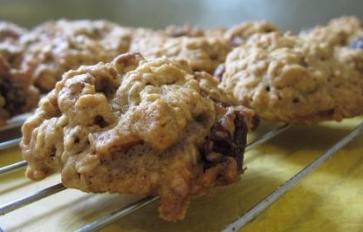
Syrups are a great way to take your medicine and to spice things up in the kitchen. Here are a couple of easy syrup-making methods. The first method is the way to go for medicinal syrups that can also be used in recipes. You can use these by the spoonful daily. The second is just for introducing some exciting new flavors into your recipes rather than for medicinal usage.
Making Medicinal Syrups
This is basically a very concentrated tea, or decoction, to which you add either sugar or honey for flavor and to preserve it. I prefer using raw honey. This is a great way to make medicine from berries, bark, seeds, and roots.
Syrups are a good way to entice kids or reluctant adults to take their medicine. Syrups work well for sore throats, annoying coughs, upset stomach, tension and anxiety…the list goes on. Syrups are also great in the kitchen as sauces, salad dressings, beverage additions and such. I often use chokecherry or hawthorn berry syrup with sparkling water and a bit of lime juice and peel as a refreshing treat in the summer. A spoonful or two of syrup can be added to hot water to make “tea.”
Method 1:
- Fill a stainless steel or ceramic pot about 1/3 of the way with dried botanicals or 1/2 way with fresh. Add enough water so that plant bits are completely submerged.
- Bring to a boil, and then reduce heat and simmer long enough to concentrate the liquid: 20-30 minutes seems to be the magic number for me. If you want to add flowers, leaves, or other soft plant parts, add them after removing the decoction from heat and steep for 15 minutes.
- Strain the liquid, and while it’s still warm, stir in raw honey.* Don’t cook the honey. The amount of honey is up to you. Equal parts honey and strong tea (1:1 ratio) will preserve the tea but to me it’s too sweet. I like 1:2 honey to tea but this will need to be stored in the fridge. *Don’t use raw honey in infants a year old or younger.
- Another way to preserve it if you don’t want to add equal parts honey is to use less honey and add alcohol so that the ethanol concentration is 20% (brandy is 40%, so a stronger alcohol would be better to use so as not to dilute the syrup too much). Technically, this would make your syrup into a cordial.
Some great botanicals to try include hawthorn berries, elderberries, rosehips, chokecherries, juniper berries, pine needles or bark, fir needles, elecampane, and ginger.
Making Herbal Simple Syrups
These are great in the kitchen but, due to the high sugar content, aren’t particularly medicinal. When I go to parties or BBQs, I’ll sometimes bring a few herbal syrups along with some sparkling water and ice to make fun and tasty beverages for folks while also introducing them to medicinal plants (even if this isn’t the ideal way to get them in…).
Herbal simple syrups (and those from Method 1) are great for drizzling over fish or chicken, mixed with apple cider vinegar and olive oil as a salad dressing, topping desserts, and whatever else your imagination can come up with.
Method 2:
- Combine equal parts water and sugar in a saucepan. I use raw sugar because I prefer the caramel-like flavor it has that refined white sugar lacks.
- For roots, seeds, barks, and other hard plant parts, add a small handful for every 12 ounces of your sugar/water mix and heat on low until the sugar dissolves. Turn off heat and let it steep another 10-15 minutes or longer if you want. Strain and use!
- For soft plant parts like leaves and flower petals, first melt the sugar in the water, turn off the heat, and then add the plant bits. Steep for 15-30 minutes. Strain and use!
- For both hard and soft plant parts, melt the sugar with the hard bits mixed in, then add the soft bits after removing from heat and steep above.
- Some great botanicals to try include the plants already mentioned; other yummy berries (like goji, blueberry, blackberry); yarrow; thyme; citrus peel (thyme and lemon peel together is fabulous); mint; rose; violet; lavender; sage; lemongrass; cardamom…








